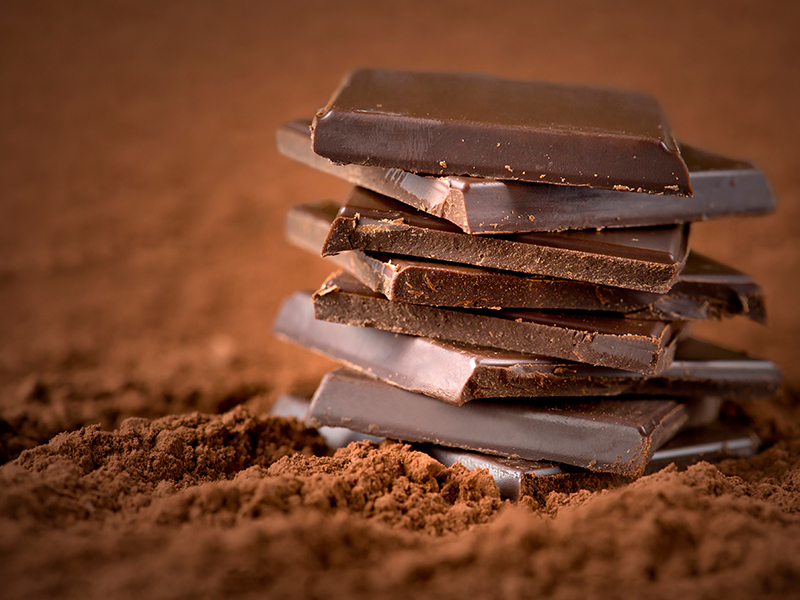Thomas Jefferson recorded his first purchase of chocolate in 1775, and later wrote to John Adams from Paris, France, on November 27, 1785, that chocolate’s superiority “both of health and nourishment will soon give it the same preference over tea and coffee in America.” It was a clairvoyant statement because the United States today purchases more than 58 million pounds of chocolate candy during Valentine’s week. “That’s $345 million in sales in just one week and it makes up more than 5 percent of chocolate candy’s sales for the year,” according to Nielsen research.
But what about the “health and nourishment” part?
The latest research on cocoa beans have been on flavinols, a plant-based nutrient potently found in cocoa. After 20 years of research, Mars Inc. has shown that flavinols help improve heart health. “It is very important to maintain a healthy cardiovascular system because the whole body really depends on normal and healthy blood flow,” explains Dr. Marc Merx, professor and attending physician at Heinrich-Heine University in Düsseldorf, Germany. As we age, our blood vessels become less elastic and elasticity is essential to healthy blood vessels and in turn healthy blood flow, which will affect the entire body, says Harold Schmitz, Ph.D., chief science officer for Mars Inc.
In 2013 the Flaviola project, a Pan-European collaboration with Mars Inc. dedicated to state of the art research into flavonoids, was completed. One of its many findings is that flavonols increase nitric oxide, which helps maintain a healthy blood flow and healthy endothelium—the lining of your blood vessels—which tells your blood vessel walls whether to expand or contract, explains Schmitz. The Flaviola project examines new approaches to nutrition when it comes to heart health. Flavinols can be found in wine, tea, grapes, blueberries and many more, but cocoa is the richest source of flavinols known to be most biologically active. When we consume (-)-epicatechin, pronounced minus epicatechin, from a food source like cocoa, most of it is transformed in metabolites. It has been observed that metabolites can maintain healthy blood flow.
Scientific American writes “raw cocoa may
be packed with brain-boosting compounds.”
A study conducted by Mars Inc. showed that a daily consumption of cocoa by patients showing early signs of Alzheimer’s “demonstrated greater cognitive function.”
So, start the cocoa binge?
Not so fast. A food’s origin, storage and processing will almost always alter its chemical composition. For cocoa, that starts at the farm with the fermenting process, according to Gary Guittard. Guittard is the president and CEO of Guittard Chocolate, a fourth generation member of a family that has been making chocolate in America since 1868. He explains that the fermenting process is where the nutrients are lost, however it is a critical process that lowers the cocoa’s astringency creating that chocolate flavor that we all expect to come through. But Guittard believes in a happy medium that still allows for fermentation without compromising the cocoa bean entirely. “We tend to under ferment as a part of our style. If a chocolate tastes a little bit astringent then that means that it wasn’t over fermented.” When Guittard described astringency, he compares it to how tannins in wine give your palate and cheeks that sensation, “That’s when you know you’ve got good chocolate.” While there is a “raw chocolate” movement that skips the fermentation and roasting process, Guittard cautions that customers could face the risk of being exposed to pathogens like salmonella or E. coli. He also says that the roasting process is critical in the removal of the cocoa bean shell.
So, what are you looking for in “healthy” chocolate?
Researchers are only beginning to establish standards for measuring flavanol content in chocolate. While dark chocolate touts to be a healthier option than milk chocolate, Guittard recommends that the higher percentage of cocoa the better. He does caution customers that while certain companies produce dark chocolate claiming such high cocoa content, many will use cocoa butter, not pure cocoa. And how does that affect you? Well if a typical 1 1/2-ounce chocolate bar were to contain 50 grams of flavanols for example, you would need to consume 10-20 chocolate bars a daily to receive the recommended dosage and by that point the sugars and fat would outweigh any possible health benefits.



